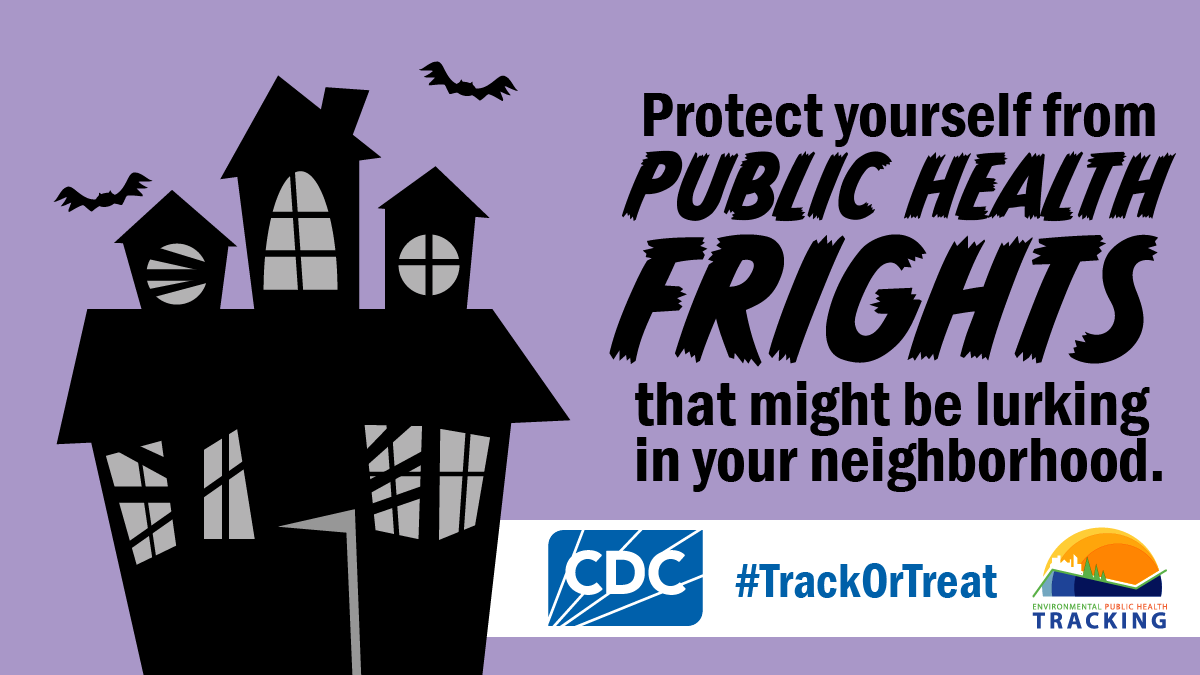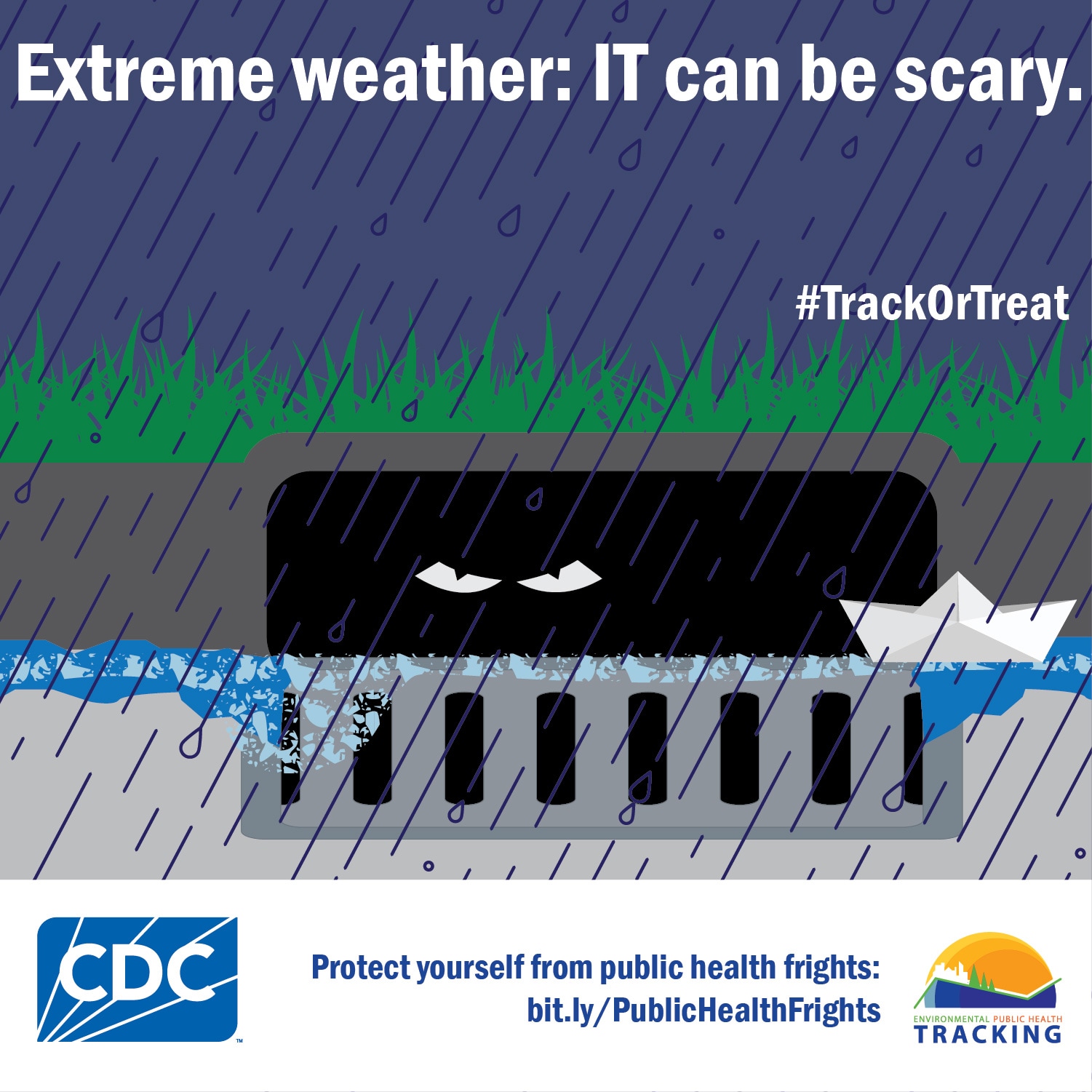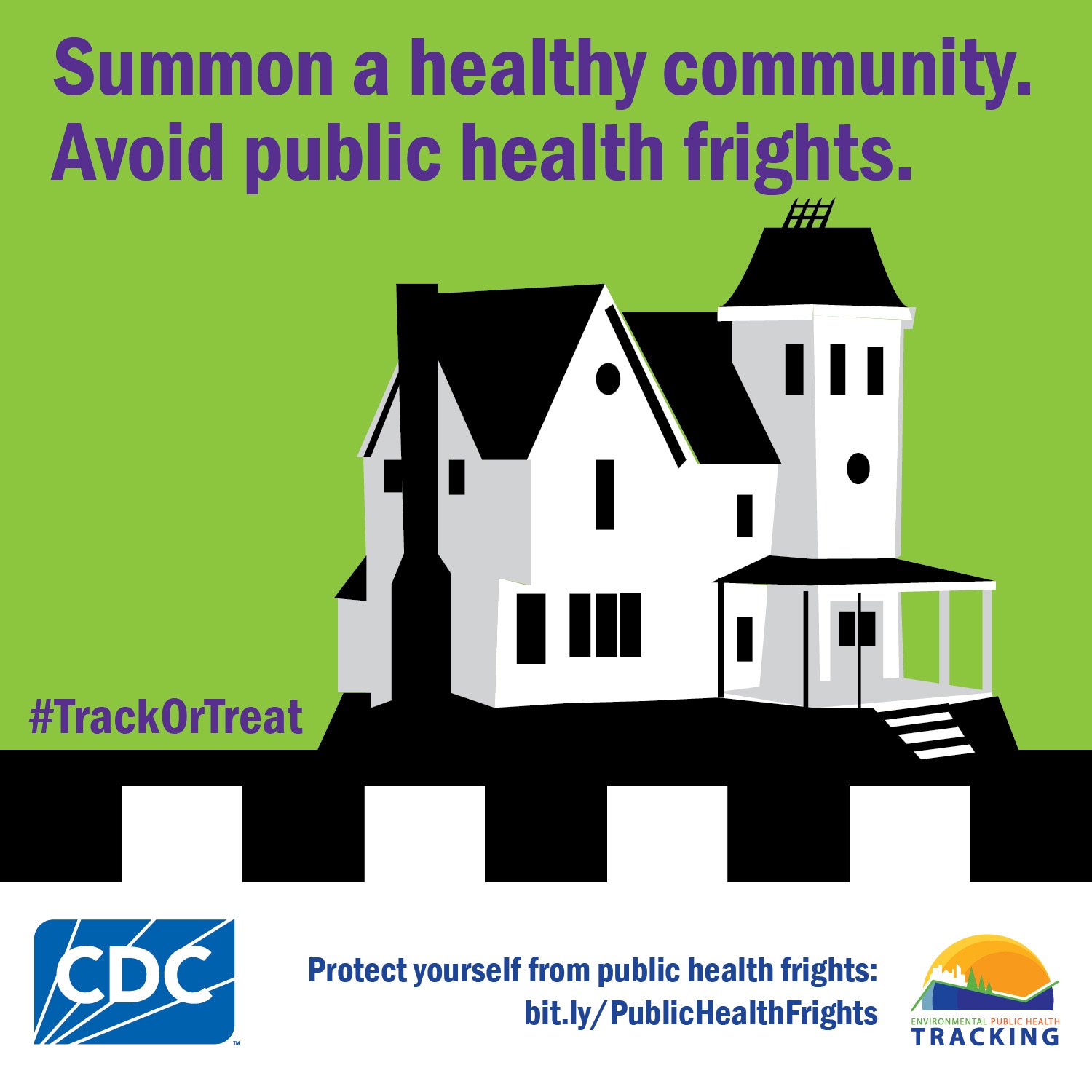At a glance
Carbon monoxide, radon, and extreme weather events…these are just a few of the public health frights that may be haunting your neighborhood! Check out the public-health-themed Halloween cards from CDC’s Environmental Public Health Tracking Program to learn more about the connection between our health and the environment.

Protect yourself from public health frights
Join CDC's Environmental Public Health Tracking Program as we celebrate Halloween each week in October with our "Track or Treat" series. Follow us on X and Facebook as we share some public health frights and Tracking's unique data, tools, and resources. The Halloween season may be filled with frights, but staying informed can help protect you all year long!
Spread the Halloween spirit! Raise awareness about public health frights that impact our health by sharing these cards with your followers and friends!
Carbon Monoxide

Make sure your house isn't being haunted by carbon monoxide! Install a carbon monoxide (CO) detector and check the batteries regularly. Keep all generators or gasoline powered engines at least 20 feet from any door, window, or vent. CDC's Tracking Network provides data about health effects due to unintentional CO poisoning.
- Explore CO poisoning data and learn why we track CO on CDC's Tracking Network.
- Learn how to protect your family from CO poisoning.
Disaster Preparedness & Response

Did you know CDC's Tracking Network data can be used to prepare for and respond to natural disasters or other public health emergencies? With customizable maps, charts, and tables, our Data Explorer allows you to view data related to wildfires, precipitation & flooding, heat vulnerability, and more. Use our tools and stay prepared!
Radon

Radon causes about 21,000 lung cancer deaths in the United States each year. Yet, unlike other threats, you can’t see or smell radon. Testing homes and buildings is the only way to know if radon levels are high. Tracking radon data in a standard way over time can help us identify areas that need more testing. This helps CDC provide a more accurate estimate of radon exposure across the U.S.
Extreme Weather

Extreme precipitation can be dangerous, and floods are one of the deadliest weather-related hazards in the United States. Tracking these data can help communities prepare for and respond to weather-related events.
Community Design

The environment in your community affects your health. Designing communities that encourage healthy choices is critical to improving the health and quality of life of community members. Public health professionals can act quickly during emergencies with knowledge of local infrastructure, vulnerabilities, and resources, and keeping communities safe and resilient.
